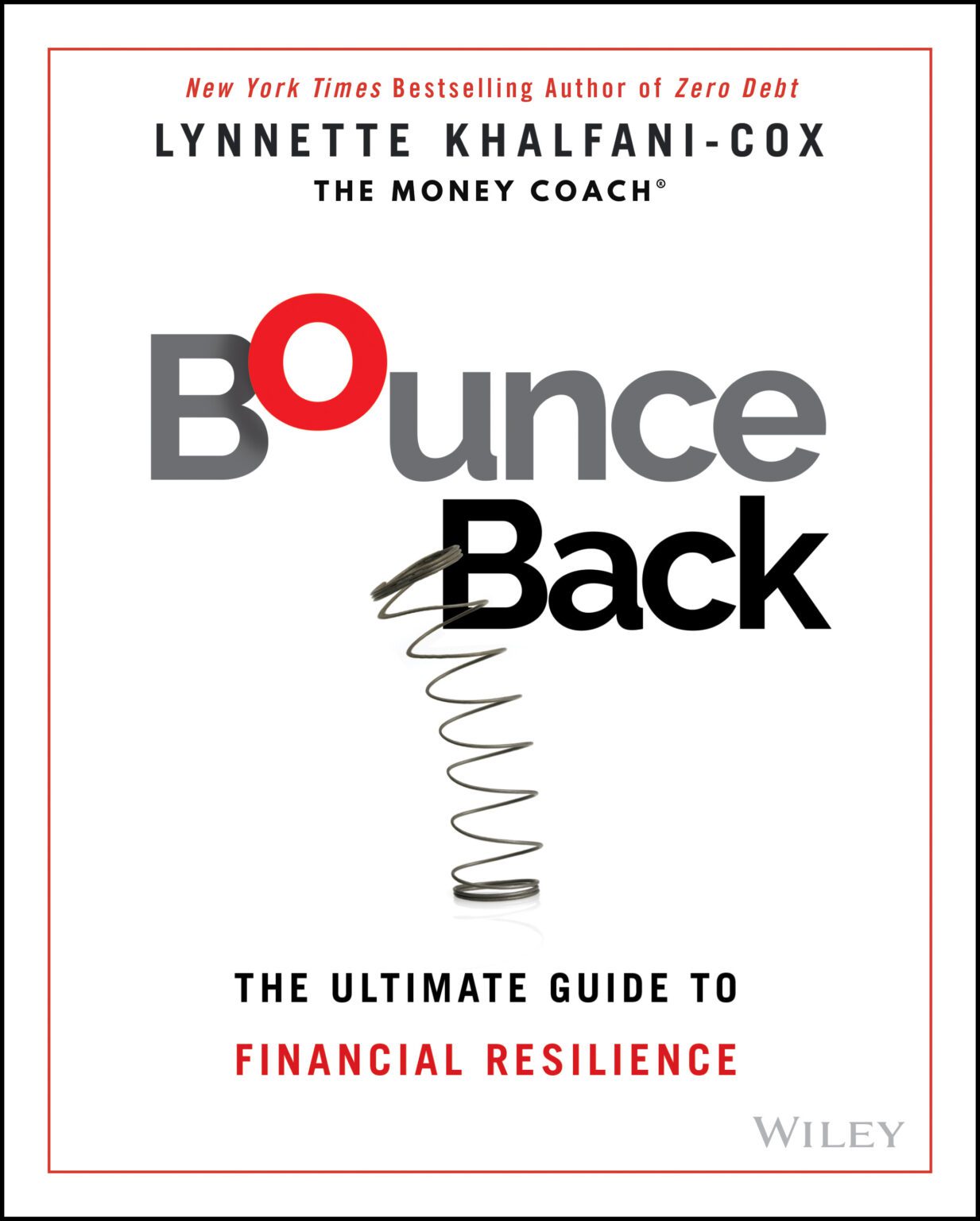Navigating the complex landscape of insurance planning can often feel like traversing a dense forest without a compass. With a plethora of options, jargon-laden documents, and diverse coverage scopes, it’s easy to find oneself lost amidst the trees. However, understanding the ins and outs of insurance is crucial for the financial wellbeing of your family.
This article aims to bring clarity to the often-daunting task of insurance planning, exploring the current state of insurance in America, the forecasted trends and challenges of the industry, and the transformations within insurance companies. We’ll also delve into the common misconceptions about insurance among younger people and the escalating competition within the sector. By the end of this read, you’ll not only have a firmer grasp of the insurance landscape, but you’ll also be better equipped to make informed decisions that could potentially safeguard your family’s financial future.
Embark on this learning journey with us and unearth the simplicity behind insurance planning. Because, when it comes to the financial protection of your loved ones, there’s no room for guesswork.
Current State of Insurance in America
Life Insurance Coverage Statistics
Did you know that approximately half the population in the United States i.e., 50% of Americans, do not carry any life insurance in 2022? It’s a surprising statistic, considering the vast benefits life insurance can provide in terms of financial security and peace of mind. Whether it’s providing for your loved ones after your passing or even serving as an investment vehicle, the implications are vast and wide-reaching. This statistic, however, brings to light the need for increased awareness about life insurance policies and their benefits.
Health Benefits Payments Update
The year 2021 saw a substantial amount of money being dedicated to life and health benefits payments. To be exact, life and health benefits payments racked up to a hefty $790.8 billion. This data point underscores the importance Americans place on their health and well-being. It’s clear that insurance, specifically health insurance, is perceived as a necessity, not a luxury, by a significant portion of the population.
Consumer Access to Insurance Plan
Access to insurance continues to be a hot topic in the U.S. As we look forward to 2023, it’s projected that nearly 59% of consumers will have access to a plan from a national insurer. Accessibility seems to be increasing, which is a positive trend to keep an eye on. It’s critical that sufficient coverage options remain available, affordable, and accessible to all Americans, no matter their income, geography, or current state of health.
Medicare Advantage Enrollment
Medicare Advantage continues to be a major player in the insurance landscape. As of 2023, a staggering 30.8 million people were enrolled in a Medicare Advantage plan. Clearly, this particular type of plan offers value and attraction to a good chunk of the U.S. population. It’s undeniable that Medicare Advantage plans play a pivotal role in providing healthcare access to millions.
Increase in Life Insurance Industry Revenue
The life insurance industry is a silent, yet powerful giant. In fact, in 2021 alone, the industry generated an impressive $945.7 billion in revenue. While there’s keen discussion about the lack of life insurance coverage in our population, there’s still a significant revenue being produced. These earnings are reflective of an industry that, despite its challenges, remains robust and continues to be an important part of the American economic machine.
Forecast and Challenges of the Insurance Industry
CAGR of the U.S Insurance Industry
As we delve into the world of insurance and its future trends, it’s fascinating to discover how rapidly this industry is expanding. The growth rate, commonly referred to as the Compound Annual Growth Rate (CAGR), acts as a clear indicator of the industry’s trajectory. Despite facing multiple challenges, the U.S insurance sector is forecasted to grow at an impressive CAGR of 7.60% from 2022 to 2026. Such an increase represents a buoyant marketplace, attracting both new entrants and investments, hence indicating promising prospects for job seekers and stakeholders alike.
Increase in Policy Lapses
While the overall picture appears rosy, the insurance industry also anticipates certain hurdles, one of them being an increase in policy lapses. Policyholders are expected to let their coverages lapse at a 20% higher rate due to economic uncertainties caused by financial constraints. This estimated trend is a matter of concern for the insurance providers who essentially depend on policy renewal for consistent revenue. Consequently, companies are compelled to recalibrate their customer engagement strategies to prevent such incidences and retain their policyholders efficiently.
Challenges in the Auto Insurance Market
In addition to the general challenges, the auto insurance market, in particular, faces its unique set of obstacles. Primary among these is the unpredictable impact of severe weather events, which are believed to be intensifying due to climate change. Such occurrences can lead to a sharp increase in claims, thus stressing the industry. What further aggravates the situation is the ongoing labor shortages, often leading to delays in claim resolutions. These factors, combined, pose a genuine threat to the sector’s smooth functioning and profitability.
However, every challenge also uncovers an opportunity for innovation. Thus, while the insurance industry navigates through the forecasted trends and challenges, it continuously adapts and evolves. The evolution brings about advancements in technology, improvements in customer service delivery, and reinforcement of trust among policyholders – ultimately propelling the industry forward in an ever-changing global landscape.
Emerging Insurance Trends in 2023
As the insurance industry forges its way into 2023, it’s imperative to stay updated on new trends that are shaping how insurers operate and connect with their customers. With digitization reshaping the insurance landscape, many novel trends and opportunities are starting to emerge. In this chapter, we’ll take you through the top five insurance trends predicted to dominate in 2023.
Key focus on Environmental, Social, and Governance (ESG)
ESG factors are increasingly playing a significant role in investments of insurance companies. Recent trends indicate a continued emphasis on integrating climate change, social justice, and ethical considerations into insurance frameworks.
- A surge in insurance premium discounts for green initiatives
- An increase in risk underwriting policies that favor socially responsible businesses
- A stricter enforcement of governance guidelines in insurance regulation
This shift is primarily triggered by the mounting realization of environmental risks, social upheavals, and governance issues that directly impact solvency ratios, return on investments, and brand reputations.
AI Adoption in Insurance
AI technology is expected to take a central role in insurance operations. By harnessing the transformative power of AI, insurance companies can significantly boost efficiency and reduce operational costs.
- Enhanced customer experiences through personalized policy recommendations
- Streamlined claims processing with AI-powered bots
- Implementation of predictive analytics for risk assessment
AI adoption has indeed become crucial in remaining competitive in the insurance sector, signifying a departure from traditional methods and equations of risk management.
Emphasis on Service and Support
With growing competition in the industry, insurers are placing increased importance on service quality and customer support. This change is driven by the need to enhance customer loyalty and retention rates.
- A trend towards 24/7 customer services and support
- Multi-channel distribution strategies incorporating digital platforms
- Real-time response to client queries and issues
These advances ensure that customers receive excellent service, regardless of their location or the communication channel they prefer.
Increased Corporate Social Responsibility
In 2023, there is expected to be an uptick in insurers’ CSR initiatives. This development is fueled by the need for businesses to align with societal values and contribute positively towards the community.
- Proactive involvement in societal development projects
- Introduction of insurance products catering to underprivileged sections
- Adoption of transparent and ethical business practices
Insurance companies are recognizing the weight that CSR initiatives hold in shaping public perception and growing customer loyalty.
Rise of Hyper-automation
The rise of hyper-automation, leveraging robotic process automation, AI, and machine learning, is set to disrupt the entire insurance value chain.
- Automated underwriting based on machine learning algorithms
- Claims handling and fraud detection with advanced AI tools
- Increased operational efficiency through integration of diverse business systems and platforms
Hyper-automation offers unmatched speed and precision in insurance operations, shaping a new future for the industry.
The top 5 insurance trends to watch out for in 2023: ESG, AI adoption, service and support, CSR, and Hyper-automation are not just passing phases. They are becoming an integral part of the insurance business model that aims to improve the sector’s risk management capabilities, profitability, and social impact. As we move forward, it becomes clear that these trends will reshape the face of insurance as we know it.
New Competitions In The Insurance Sector
In today’s fast-paced world, the name of the game in every sector is ‘Innovation.’ Businesses that fail to adapt and provide modern, customer-centric solutions may gradually phase out. This statement particularly rings true in the insurance sector where new competition isn’t just coming from established insurers but also from industries where they least expect – banks and other financial institutions. Banks have begun to branch out and diversify, now offering services which were traditionally performed by insurance companies.
So, what does this mean for insurance companies? Well, it suggests a need to re-evaluate their strategies and offerings to stay competitive. They may need to leverage digital tools, invest in customer experience, and innovate their product lines to keep up with the new competition.
Let’s take a deeper look into how banks and other companies are influencing the insurance landscape:
- Diversified Services Offered by Banks: It’s no longer surprising to see banks offering insurance policies as part of their product mix. Asset protection, life, health, and other forms of insurance are now provided by banks, shaking up the dynamics of the insurance industry.
- Fintech Influence: Fintech companies are redefining the ease of doing business. Customers are looking for convenience and seamlessness, and Fintech companies are delivering. This approach inevitably affects the insurance sector as customers become accustomed to the ease of banking and payment apps and start looking for similar experiences in their insurance interactions.
- Digital Revolution: The move toward digitization has become a significant factor. Companies offering online and mobile services have an edge over traditional businesses. Customers can now purchase insurance, submit claims, and interact with their insurers from the comfort of their homes.
- Customer-Centric Industry Shift: Every industry including insurance, is now realizing the importance of servicing a market of ‘one’. Compelling, personalized experiences are not a ‘nice to have’ anymore; they are expected from every service provider, including insurance companies.
“The only constant in life is change.” – Heraclitus
This quote is deeply relevant to the insurance industry today. The presence of banks in the insurance sphere, the embrace of digital technology, along with the push of fintech and the shift towards customer-centric approaches represent the evolving nature of the insurance sector. Insurance companies that see this change as an opportunity to innovate and adapt, rather than a threat, are the ones that will hold their own amidst this new competition. The future of insurance, it seems, lies in its ability to evolve, integrate and above all, digitize.
Misconception and Forecast in the Insurance Industry
Misconceptions often lead to misguided decisions. This is especially true in the insurance industry, where a common misunderstanding has led many younger people to completely bypass an essential financial safeguard – life insurance. This fallacy, coupled with the intriguing forecasted growth in global insurance premiums, paints a vibrant yet complex picture of the insurance landscape.
Misconception About Life Insurance Cost Among Younger People
Most young individuals carry this widespread pretense: life insurance is just too exorbitant for their budget. But here’s what’s really interesting – according to solid data, most younger people overestimate the cost of life insurance by as much as three times! It is indeed a drastic over-calculation, enough to dissuade many from taking advantage of this crucial financial instrument.
It’s absolutely vital for younger people to understand the truth about life insurance costs and how they factor into their financial planning. Crucially, being young and healthy could mean more affordable life insurance premiums. In fact, purchasing life insurance at a younger age typically results in significantly lower premiums compared to securing a policy later in life.
There are several reasons behind this price misrepresentation:
- Lack of awareness and education regarding life insurance policies.
- Overestimation of the needed coverage.
- Fear of undergoing medical examinations (often misinterpreted as always leading to higher premiums).
By unravelling these flaws, the young population could not only ensure their loved ones’ financial safety but also meticulously manage their own long-term financial planning.
Forecasted Growth of Global Insurance Premiums
Now, let’s take a global perspective on things. The insurance industry isn’t merely surviving; it’s poised to grow and flourish. Reliable forecasts tell us that global insurance premiums will grow by 1.1% in 2023 and 1.7% in 2024. This anticipated growth indicates a rising demand for different types of insurance services and policies, hinting towards a brighter future for the industry.
A surge in global insurance premiums suggests consumers’ heightened financial awareness and desire for greater security. It could also reflect the growth of industries such as real estate, automobiles, and technology – sectors that often require various insurance coverage.
So, despite the misconceptions and challenges, the insurance industry seems to be on an undeniable growth trajectory. Through effective education and awareness, these growth rates could escalate even further, as more and more young people embrace life insurance for the life-ensuring tool it genuinely is. From the individual’s point of view to the global scene, insurance continues to underscore its value as a pillar of financial security.
With an understanding of these misconceptions and a knowledge of the promising forecast, those within the insurance industry, or those considering stepping into it, can forge a path of informed decisions and encouraging growth.
Transformation In The Insurance Companies
Insurance companies have always been among the mainstays of the global economy. However, their traditional ways of doing business are being challenged more than ever in today’s digital era. Market forces are driving insurance companies to revamp their strategies and become more streamlined, digital-savvy, and customer-focused. Their goal? To increase market presence and provide unmatched service to their clientele.
This transformation is underscored by two key objectives: increasing efficiency and cementing market presence.
Increasing Efficiency
Insurance companies are reducing operational bottlenecks by diving headfirst into digitalisation. From paperless transactions to automation of routine tasks, they are integrating technology in their processes like never before. Now, claims processing, underwriting, and customer service can all be managed and tracked digitally, significantly slashing service delivery time. These strides towards efficiency aren’t just good for business—they provide significant benefits for customers too, promoting ease and quickness of service.
Cementing Market Presence
For many insurance companies, a strong market presence is everything. To achieve this, companies are focusing on dynamic pricing models that adapt to individual customer needs, thereby giving them a competitive advantage. They are also exploring untapped markets, expanding their product lines, and tailoring their services. In a competitive landscape, standing out from the crowd is crucial, and insurers understand this.
In the past, the foundation of an insurance company’s success was its scale of operations and its ability to manage risk effectively. While these remain important, the rules of the game have changed. The insurers of today, and of the future, must be digital, customer-focused, and innovative above all else.
Indeed, the transformation within the insurance sector is visible and it is revitalising a traditionally static industry. As the market continues to evolve, insurance companies must stay ahead of the curve by continuing to innovate and adapt. The successful insurer of the future will be one that can leverage digital tools to provide exceptional service, meet individual customer needs, and cement a solid market presence.
Read more: Planning Your Child’s Financial Future: The Benefits of Insurance
It’s an exciting time to watch the industry transform. As the old saying goes, “The only constant in life is change.” And for the world of insurance companies, change isn’t just on the horizon—it’s well underway.
Conclusion
Understanding the intricacies of the insurance landscape can indeed seem daunting. However, with the right guidance, you can navigate it proficiently to safeguard your future and that of your loved ones.
The trends and forecasts we’ve discussed in this article paint a robust picture of the future of insurance in America and the world over. So, there’s no better time than now to take hold of your financial future with comprehensive insurance planning.
If you’re looking for professional assistance to understand this ever-evolving industry and tailor an insurance plan that fits your needs perfectly, the experts at AskTheMoneyCoach.com are always ready to help.
With a range of services, from budgeting to insurance, our team can guide you to smart financial planning and secure insurance choices. After all, the ultimate goal of insurance is to protect you, your family, and your assets, assuring you peace of mind in the face of life’s uncertainties. Plan right, and rest assured you’re in safe hands.
Frequently Asked Questions
- Why is insurance planning important for my family’s financial protection?Insurance planning is important for your family’s financial protection because it provides a safety net in case of unexpected events, such as accidents, illnesses, or death. It helps cover medical expenses, replace lost income, and ensure your family’s financial stability during difficult times.
- What types of insurance should I consider for my family’s financial protection?There are several types of insurance you should consider for your family’s financial protection, including life insurance, health insurance, disability insurance, and property insurance. Each type serves a specific purpose and provides different coverage options.
- How can I determine the right insurance coverage for my family’s needs?To determine the right insurance coverage for your family’s needs, consider factors such as your family’s unique circumstances, current and anticipated future expenses, existing savings and assets, and any specific risks or concerns. It’s advisable to consult with an insurance professional to assess your needs accurately.
- What should I consider when choosing an insurance provider?When choosing an insurance provider, consider factors such as the provider’s reputation, financial stability, coverage options, customer service, and the policy terms and conditions. It’s essential to select a reliable and reputable provider that can meet your specific insurance needs.
- Should I regularly review and update my insurance plans?Yes, it’s crucial to regularly review and update your insurance plans. Life circumstances change, and your insurance needs may evolve over time. Reviewing your plans annually or whenever a significant life event occurs, such as marriage, birth of a child, or changes in income, is important to ensure your coverage remains adequate and up-to-date.








